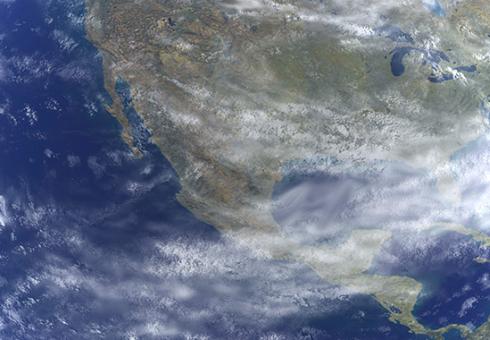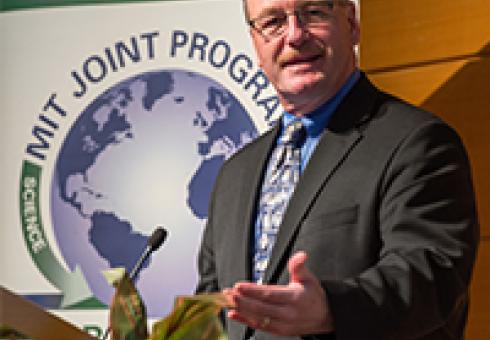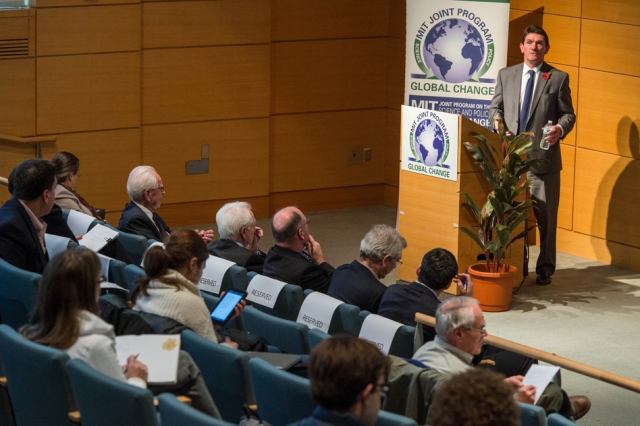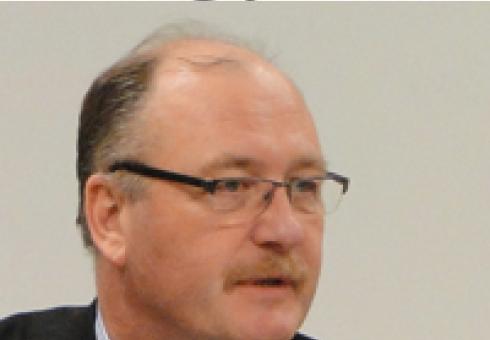By Vicki Ekstrom
Read the 2013 Energy and Climate Outlook
As international negotiators discuss global efforts to confront climate change at the 19th United Nation’s Conference of Parties (COP19), a group of MIT researchers suggest that the current regional efforts may not be enough to avoid the dangerous consequences of rising emissions.

“As our global population swells to more than 10 billion by the end of this century, climate change is one of the forces of global change that will shape how the world feeds, shelters, transports, and otherwise attends to this growing mass of people,” says John Reilly, co-director of the Joint Program on the Science and Policy of Global Change and an author of the 2013 Energy and Climate Outlook. “Our latest Outlook is a window into the future as we view it in 2013, but it is still in our power to change what we see by taking action.”
While much of the Outlook’s projections remain the same as in their 2012 Outlook – highlighting that large or developing countries will play a greater role in shaping our global challenges over time – shifting trends and new and updated data have led to subtle changes. One such trend is the growing use of natural gas and, to a lesser extent, renewable energy. Policies such as the European Union’s Emissions Trading System (and assuming Europe continues on its announced post 2020 policies)helped bring about some of these changes; cutting Europe’s coal generation in 2050 by almost half compared to the last Outlook. The U.S. is also expected to generate 35 percent more renewable energy and 15 percent more natural gas by 2050 compared to the 2012 Outlook.
Taking into account these resource and policy changes, the researchers project global natural gas consumption by 2050 to be 8 percent higher than their 2012 estimates, with China’s consumption alone more than tripling. They also project global consumption of renewable sources by 2050 to be 13 percent higher, while coal and oil usage will sink slightly (3 percent).
Changes in the global energy mix are partly responsible for a 12 percent dip in the projected CO2 emissions by the end of the century. Yet, these emissions are still projected to be 95 percent higher than in 2010. Even with cumulative emissions sinking slightly, the Outlook projects the world will warm by 3 to 6°C by 2100 compared to 2000, with the median forecast at 3.8°C.
“With natural gas becoming more and more important to the global energy mix each year, and recent policy efforts spurring an increased use of renewables, we do believe there will be slightly fewer emissions than we originally forecasted,” says Sergey Paltsev, an author of the study and the assistant director for economic research at the Joint Program on Global Change. “But, while growing at a slightly lesser rate, emissions are still increasing, and if they continue to grow we might experience very harmful consequences.”
Building on the models used for their 2012 Outlook, the researchers identify the hottest and coldest regions and the range of uncertainty. They find that generally the polar areas display the most warming, with Northern Canada and Siberia warming between 6 and 12°C by 2100. Meanwhile, North America, Europe and Asia can expect temperatures to warm by as much as 4 to 8°C, and Africa, Australia and South America can expect temperature increases between 3 and 7°C. The researchers also warn there could be very damaging consequences from an increase in extreme precipitation events, such as floods. Their analysis shows most land areas will become wetter, while over the ocean and Tropics a few regions could become drier.
“Taking into account the vast uncertainty in climate projections, even in our most optimistic scenario we see that these changes will surely impact food and water resources, among other changes,” says Erwan Monier, an author of the study and a scientist at the Joint Program on Global Change.
As in the 2012 Outlook, the researchers emphasize that further cuts in developed countries would be useful. But only 13 percent of emissions are expected to come from these countries by 2100, meaning their efforts will have less of an impact over time as the share of emissions from other nations increases. Emissions from countries outside the developed world could grow by almost 150 percent by the end of the century.
Reilly, Paltsev and nine others based their projections on the United Nations' estimate that the world's population will grow to more than 10 billion by 2100. Using their computer modeling system to project how this growth would affect our energy and climate, they then incorporated pledges made by G20 nations at international meetings in Copenhagen in 2009 and Cancun in 2010 to cap emissions by 2020.
“As difficult as the progress made in Copenhagen and Cancun was to achieve, far more effort is needed to limit greenhouse gas concentrations to levels that avoid dangerous climatic consequences,” the authors write, stressing the importance of the ongoing international talks.











